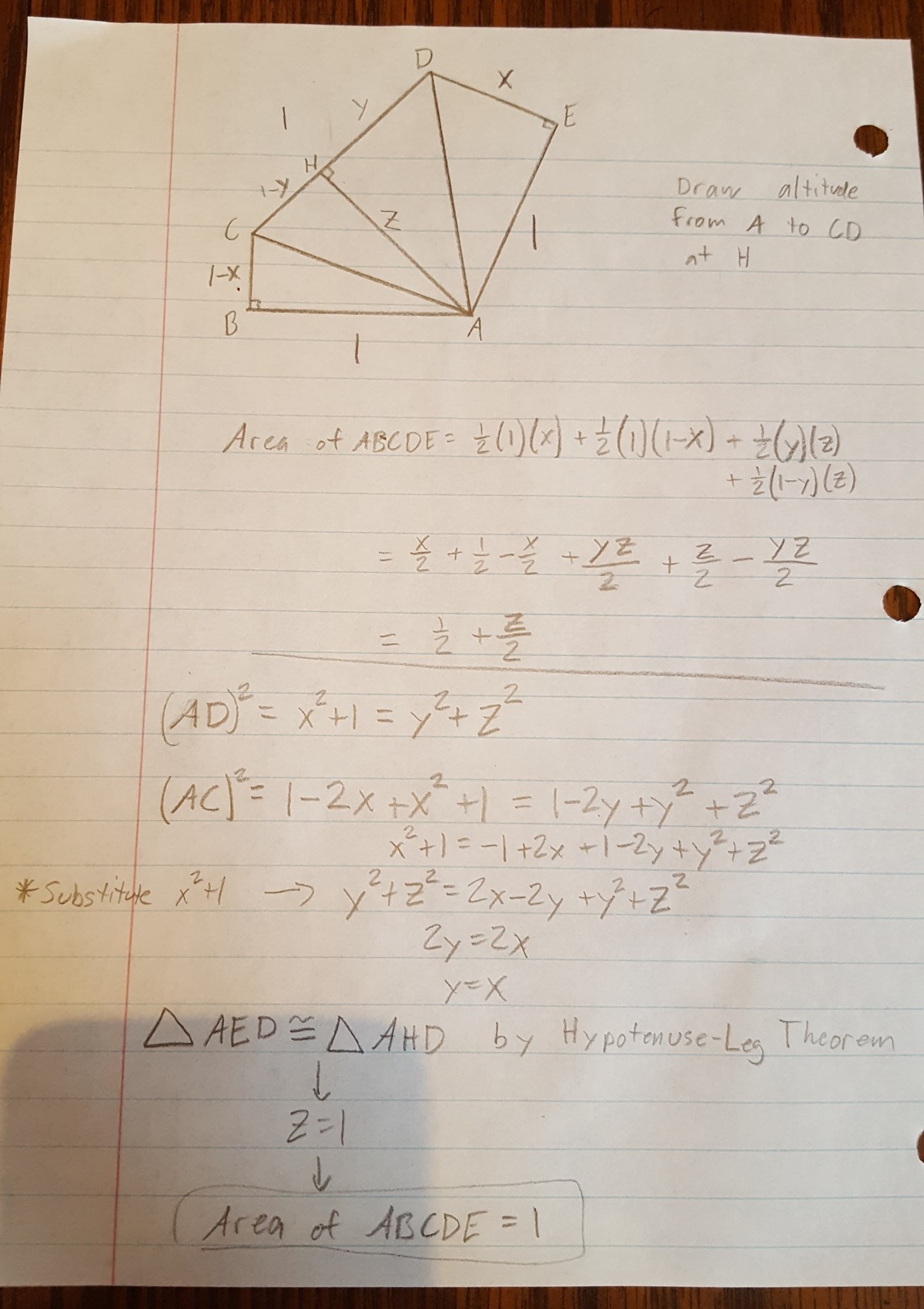The Pentagon
In the pentagon A B C D E , ∠ A B C = ∠ A E D = 9 0 ∘ , A B = C D = A E = B C + D E = 1 . FInd the area of A B C D E .
Give your answer to 2 decimal places.
The answer is 1.00.
This section requires Javascript.
You are seeing this because something didn't load right. We suggest you, (a) try
refreshing the page, (b) enabling javascript if it is disabled on your browser and,
finally, (c)
loading the
non-javascript version of this page
. We're sorry about the hassle.
3 solutions
Nice one Luke. Based on your drawing, there is a pure geometric solution. We can rotate triangle ABC around A, until B coincides with E. Let's say C becomes C', then D, E, C' are collinear, and DC'=DE+EC'=DE+BC=1. Now it's easy to show that triangle ADC and ADC' are congruent by SSS, and each have area of 1/2(1)(1)=1/2, for a total area of 1.
Let B C = x , then D E = 1 − x . This means that A C = 1 + x 2 , A D = x 2 − 2 x + 2 . The area of △ A C D is given by:
S △ A C D = 2 1 + x 2 + 1 + x 2 − 2 x + 2 ⋅ 2 − 1 + x 2 + 1 + x 2 − 2 x + 2 ⋅ 2 1 − x 2 + 1 + x 2 − 2 x + 2 ⋅ 2 1 + x 2 + 1 − x 2 − 2 x + 2 = 2 1
At the same time,
S △ A B C + S △ A E D = 2 x + 2 1 − x = 2 1 ∴ S A B C D E = S △ A B C + S △ A E D + S △ A C D = 2 1 + 2 1 = 1
I didn't use the general case first. I imposed B C = D E = 2 1 and drew a normal on CD through point A. This gave rise to 4 right triangles each having two adjacent sides [adjacent to the right angle] of length 1 and 1/2. Hence, A = 4 × ( 2 1 × 1 × 2 1 ) = 1 But, the problem stated to provide an answer having 2 decimal places. Then, I got suspicious and proved the general case. But, I'm not typing it here as other solutions depict that.
A different solution.